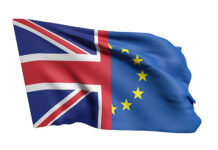Oil outlook remains clouded
Crude oil prices struggled to recover from the sharp sell-off that has sent a barrel of West Texas Intermediate to $42.05, down almost 20% from its peak of May 25th. However, since June 21, the WTI was able to recover marginally thanks to a weaker US dollar and reassessment of the fundamentals by investors. From a technical standpoint, the WTI’s sell-off has been stopped by the key support at around $42 (multi lows).
Overall, it seems that investors are negatively skewed about the oil outlook as even the recent political turmoil in the Middle East – several countries cut their diplomatic ties with Qatar, a major oil and gas producer in the region – was unable to stop the debasement in crude oil prices. In addition, the sustained contraction in US crude inventories seems to have no effect either.
Market participants have lost faith in OPEC’s ability to drive prices as several of its members (mostly Iraq) failed to comply with the deal and did not cut production sufficiently. In addition, Iran declared it had increased the capacity of its main oil terminal, which tends to indicate that the world’s fifth largest oil producer is all set to inch up production. Finally, according to the EIA, the US had more than doubled its exports of crude oil and petroleum products over the last six years as exports restrictions were lifted. Furthermore, the US shale industry continues to optimise production and cut costs.
On the medium to long-term we remain cautious on the oil outlook as the fundamentals do not support upside gains. However, in the short-term, crude oil prices have room to recover somewhat, thanks to a weak dollar and the end of the panic selling.
Draghi’s comments boost single currency
Mario Draghi sent the euro much higher yesterday after his speech at the European Central Bank Forum. Markets felt relieved especially after his dovish comments a few weeks ago when he declared that the Eurozone still needed ECB stimulus.
Draghi made also some comments about inflation, which is below target, and that should remain soft for some more time despite ongoing improvement.Recently pressures were adding up on the ECB’s shoulders to tighten its monetary policy, especially since the Fed has twice raised rates this year already. Major drawbacks preventing the European institution to do so were mostly the modest economic growth and political uncertainties. Those elements are now not centre stage any more, particularly since the election of Emmanuel Macron in France.
Yesterday, the euro went over 1.1300 for the first time in nine months. The ECB President showed its optimism by stating that the Eurozone recovery is progressing and that the current monetary policy stance must accompany this recovery. That sounded hawkish but we consider it was not. Mario Draghi did not explicitly talk about tightening but about “parameters adjustment”. Markets interpreted that comment as a hint about further tightening. We rather believe this actually leaves the door open for a continued ultra-loose monetary policy.













